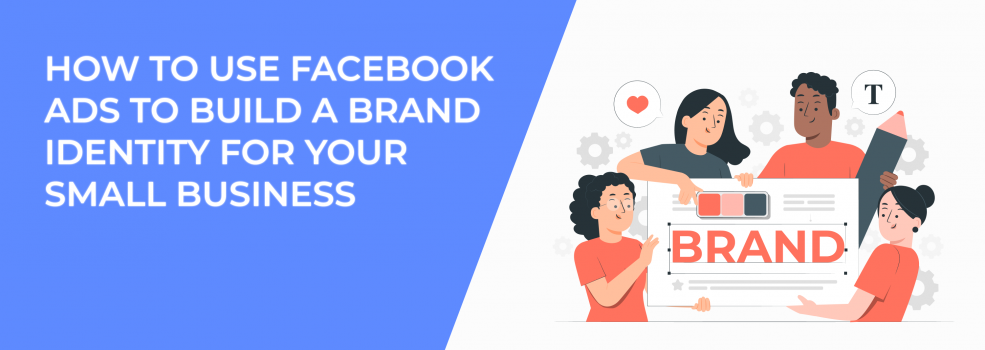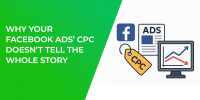If you run a small business, you’ve probably used Facebook Ads to boost sales or drive traffic. But what if you could also use those ads to shape how people see your brand — and remember it?
Brand identity is more than a logo or a slogan. It’s how your business makes people feel. It’s what they think of when they hear your name. And Facebook Ads, when used intentionally, can help you build that identity in a way that sticks.
Let’s explore how you can use Facebook Ads to build a strong, recognizable brand even if you're just starting out.
1. Define What Your Brand Stands For And Let That Guide Every Ad
Before you launch any ads, get clear on your brand identity. Ask yourself:
-
What values does your business represent?
-
What kind of tone do you want to use — friendly, professional, playful?
-
What emotions should people feel when they see your brand?
For example, let’s say you own a small organic snack company. You might want your brand to feel fresh, wholesome, and fun. That means your ads should use natural colors, clean visuals, and a friendly tone of voice.
Actionable tip: write a short “brand identity checklist” and use it to review every ad before you publish it. Include things like:
-
Are the colors and fonts consistent with our branding?
-
Does the copy sound like us?
-
Does the ad reflect our values?
This helps keep your messaging on-brand, no matter what type of ad you're running.
If you're a local business and want a blueprint for aligning messaging with identity, check out this step-by-step Facebook marketing strategy for local businesses in 2025.
2. Use Creative Assets That Visually Tell Your Brand Story
The images and videos in your Facebook Ads matter more than you think. They're the first thing people notice and they say a lot about your brand.
Best practices:
-
Use original photos or branded visuals whenever possible. Avoid overly generic stock photos.
-
Match your visual style to your brand personality. For a tech startup, sleek and modern works. For a handmade jewelry shop, go with warm, artistic visuals.
-
Use video to tell deeper stories. Show behind-the-scenes footage, your product in use, or customer testimonials.
Use case: a local fitness studio runs short video ads showing real instructors, real classes, and smiling members. The tone is energetic and welcoming. Viewers start to associate the brand with motivation and community — not just workouts.
Tip: create templates for your image and video ads using tools like Canva or Adobe Express. Stick to consistent color palettes, fonts, and logo placement.
To go deeper into crafting standout creatives that stay on-brand, take a look at our guide on how to stand out and stay on-brand with stunning Facebook ad creatives.
3. Choose Ad Formats That Support Your Brand Messaging
Facebook offers a variety of ad formats — and each one gives you a different way to express your brand.
Here’s how to use them smartly:
-
Carousel Ads: Great for showing multiple products, services, or brand values. Use this format to highlight variety while keeping the design consistent.
-
Video Ads: Perfect for storytelling, product demos, or brand introductions.
-
Image Ads: Ideal for quick messages or announcements. Just make sure your imagery is on-brand.
-
Stories and Reels: Use these for casual, behind-the-scenes content. They feel more personal and authentic.
Example: a sustainable fashion brand uses Reels to show how their products are made, while running carousel ads that feature eco-friendly materials and styling tips. Both formats reinforce the same message — sustainability and style can go hand-in-hand.
If you’re unsure which formats work best for specific goals, here’s a useful read on how to experiment with different ad formats for maximum engagement.
4. Target Audiences That Align With Your Brand Values
Targeting is not just about demographics. It’s about fit. The better your audience matches your brand personality, the more your message will resonate.
Strategies to try:
-
Use Lookalike Audiences based on loyal customers or engaged followers. These users are more likely to connect with your brand voice.
-
Build Custom Audiences from website visitors, email subscribers, or video viewers — people already familiar with your brand.
-
Layer interests and behaviors that reflect your values. For example, if your brand is focused on wellness, try targeting users interested in yoga, clean eating, or mindfulness.
Use case: a startup that sells eco-friendly home goods targets people interested in zero-waste living and environmental causes. Their ad copy speaks directly to those concerns and it converts better because of that alignment.
Tip: use Facebook’s A/B testing tools to test how different audiences respond to your messaging. Look at not just clicks, but also engagement and relevance score.
5. Focus on Consistency, Then Add Variety
Consistency builds recognition. You want people to see your ad and immediately know it’s from your brand.
But consistency doesn’t mean being repetitive. You can vary your content while keeping your style, tone, and message aligned.
Ways to keep it fresh:
-
Rotate between formats: image, video, carousel, stories.
-
Highlight different angles: product features, customer stories, team culture.
-
Use seasonal campaigns or themed promotions — but stay on-brand.
Example: a coffee shop runs weekly ads. One week it features a seasonal drink, the next it spotlights a customer story, then a behind-the-scenes roast session. Different content — same voice, same look.
6. Build a Brand Journey, Not Just a One-Time Campaign
Think long-term. One ad might get a click. A series of ads, each reinforcing your brand identity, builds lasting familiarity and trust.
How to structure a brand-building campaign:
-
Awareness Ads: Introduce your brand — your story, mission, and what makes you different.
-
Engagement Ads: Share value-driven content like how-tos, behind-the-scenes videos, or FAQs.
-
Conversion Ads: Offer promotions or lead magnets, now that users know and trust you.
Example: a skincare brand starts with a video ad about their founder’s journey. Then they retarget viewers with product tutorials. Finally, they offer a discount to people who engaged. Each step moves people closer to becoming a customer — while reinforcing what the brand stands for.
For a full-funnel approach to take people from brand discovery to loyal customer, explore our complete Facebook Ads funnel strategy guide.
7. Track Brand Performance (Not Just Conversions)
Sales matter. But when you're building a brand, you should also track signs that your identity is sticking.
Key indicators:
-
Engagement rate (likes, shares, comments),
-
Video completion rate,
-
Increase in followers or page likes,
-
Brand search volume (how often people search for your business by name),
-
Post-ad surveys (Facebook Brand Lift can help with this).
Tip: create a monthly “brand health report.” Track brand-specific metrics, not just conversions. Look at trends in engagement and how people are interacting with your content.
Final Thoughts
In a crowded feed, people scroll fast. If you want your small business to stand out, your Facebook Ads need to do more than sell. They need to communicate who you are.
Build consistency. Tell a story. Target the right people. And always design with your brand identity in mind.
Because the businesses people remember are the ones that don’t just push products — they show personality, values, and a clear sense of purpose.

